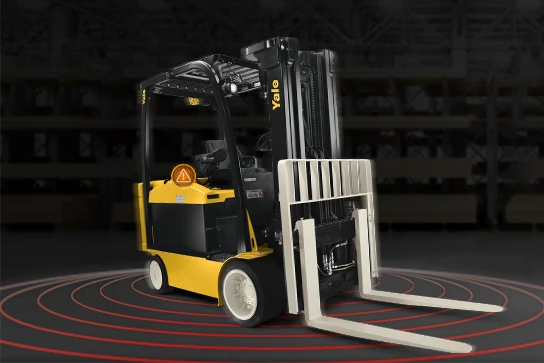
Stability support that doesn’t overcorrect
When Yale Reliant intervenes, it does so carefully – not with abrupt shifts or jerks that can upset stability.
The technology continuously measures the combined center of gravity of the lift truck and load it carries. When a potential risk is detected, it determines the appropriate degree of performance adjustment to respond with, taking into account the forklift speed, acceleration, travel direction, steering angle, mast tilt and load weight, height and position.



